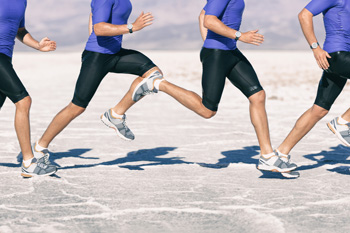Feet and Ankles Working Together
Tuesday, 29 November 2022 00:00
The body’s need for speed and movement starts with the feet. They are considered to be the foundation of the body, and for the majority of the population, they are essential in completing daily activities. The gait is known as the walking style, and this movement may be measured to learn how an individual walks, runs, and moves. There are various parts to the foot bones, consisting of the forefoot, midfoot, and hindfoot. The back of the foot, which is also known as the hindfoot, is found under the ankle joint and is composed of two bones. Five bones are found in the midfoot, located in the center of the foot. The forefoot is the front of the foot, which houses the metatarsals, phalanges, and sesamoid bone. The foot bones and ankles work together to produce a smooth walk, which is made up of two phases, consisting of the swing and stance phases. The ankle and muscles in the front and back of the leg enable the foot to move up and down, and the transverse tarsal joint propels the foot to move forward. If you would like additional information about how the ankle and feet work together, please consult with a podiatrist who can provide you with the information you are seeking.
If you have any concerns about your feet, contact Dr. Mark Spier from Maryland. Our doctor can provide the care you need to keep you pain-free and on your feet.
Biomechanics in Podiatry
Podiatric biomechanics is a particular sector of specialty podiatry with licensed practitioners who are trained to diagnose and treat conditions affecting the foot, ankle and lower leg. Biomechanics deals with the forces that act against the body, causing an interference with the biological structures. It focuses on the movement of the ankle, the foot and the forces that interact with them.
A History of Biomechanics
- Biomechanics dates back to the BC era in Egypt where evidence of professional foot care has been recorded.
- In 1974, biomechanics gained a higher profile from the studies of Merton Root, who claimed that by changing or controlling the forces between the ankle and the foot, corrections or conditions could be implemented to gain strength and coordination in the area.
Modern technological improvements are based on past theories and therapeutic processes that provide a better understanding of podiatric concepts for biomechanics. Computers can provide accurate information about the forces and patterns of the feet and lower legs.
Understanding biomechanics of the feet can help improve and eliminate pain, stopping further stress to the foot.
If you have any questions please feel free to contact one of our offices located in Columbia and Reisterstown, MD . We offer the newest diagnostic and treatment technologies for all your foot and ankle needs.









